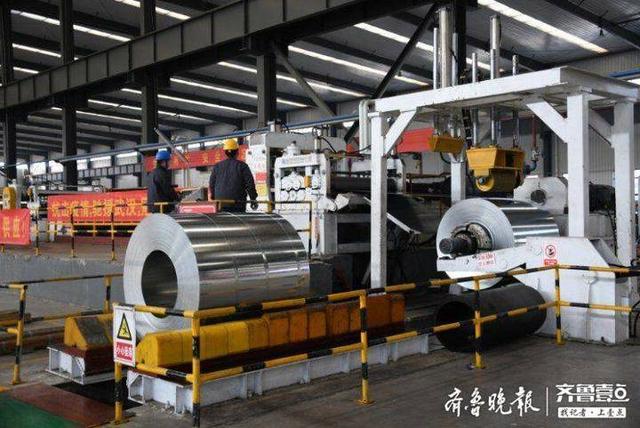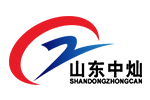版权所有 © 2018 山东中灿 ICP备案号:鲁ICP备16001552号-1 网站建设:中企动力 济南二分
ABOUT US
Tel: 0086-538-6315517
Fax: 0086-538-6315510
Phone:0086-15588577955
Adress:Hi-Tech Development Zone,
Feicheng,Taian,Shandong ,China.
E-mail:ella@zhongcansteel.com
PRODUCTS
websites
0086-538-6315517
Service Hotline
Challenges and opportunities for Chinese steel under the epidemic situation
At present, the global COVID 19 epidemic situation is still escalating, which also brings a lot of external challenges to China's steel industry.At the same time, progress has been made in the prevention and control of the epidemic. Steady and orderly progress has been made in the resumption of work and production.
China's steel industry faces many challenges
The challenges posed by the outbreak to China's steel industry are manifold.
From the international perspective, one is the iron ore price volatility.In 2019, iron ore prices fluctuated sharply, rising from a peak of around $70 a tonne at the beginning of the year to nearly $120 a tonne, due to the collapse of a tailings pond in Brazil and a cyclone in Australia.While the total import volume remained stable, the annual average import price increased by about us $24 / ton, and the import amount increased by 33.6%, which squeezed the profit space of the steel industry and had a great impact on the stable operation of China's steel industry.Since the Spring Festival in 2020, due to the superposition of epidemic situation, seasonal weather factors in major supplier countries and financial capital factors, the iron ore price has fluctuated significantly again and deviated from the trend of steel price.In the iron ore supply pattern under the situation of the overall easing, iron ore prices stay high, appear contrary to fundamentals of supply and demand trends, squeeze the iron and steel industry profits space, once again highlights the current iron ore pricing mechanism is not perfect, also reflects the price of iron ore trade excessive financial attributes, and a certain monopoly properties.
Second, the steel export situation is extremely grim.In 2015, China's steel direct export volume reached a peak of 110 million tons, and then experienced four consecutive years of decline. In 2019, the total steel direct export volume has dropped to 64.293 million tons.Since the outbreak of the disease, overseas concerns about the outbreak in China have led to the cancellation of some orders, while the situation in China's major steel export destinations -- Asia and Europe -- has been relatively severe, and the steel export situation has continued to decline significantly.According to customs statistics, from January to February in 2020, China exported 7.811 million tons of steel, down by 27.0% year-on-year.The value of exports fell 15.9 per cent year on year.
In terms of indirect export of steel, China exports nearly 100 million tons of steel annually with the indirect export of mechanical and electrical products.In the short term, the epidemic has caused a great impact on the electrical machinery and equipment manufacturing, general equipment manufacturing, automobile manufacturing and other key steel fields. The indirect export situation is also facing great challenges, and the impact is still difficult to assess.
From the perspective of domestic steel demand, the epidemic has an important impact on the steel downstream industry and its steel consumption.
The short - term impact of the construction industry is large, medium - and long-term will produce a large compensatory demand.During the outbreak, the decline in demand in the construction industry was more pronounced.However, considering the factors of climate and holidays, the overall demand of China's construction industry is relatively weak before and after the Spring Festival, and the construction sites in north China are generally in a state of shutdown, which reduces the impact of the epidemic on the market to some extent.In the medium to long term, China has ample room for macro-control policies, and the economy is relatively resilient. Counter-cyclical adjustment policies can effectively stimulate the economy, such as the 1.2 trillion yuan reverse repurchase operation carried out by the people's bank of China on February 3, and the market feedback is obvious.After the outbreak, the steel demand of public transport infrastructure construction represented by roads and ports, as well as new urbanization construction projects represented by 5G base stations, ultra-high voltage projects, intercity rail and charging piles for new energy vehicles, will release compensations and effectively accelerate the increase of steel market demand.
Machinery industry suffered a large short-term impact, the whole year will show a small decline.Machinery manufacturing enterprises delay the overall resumption of work, the short-term production of various products decreased significantly, the first quarter steel consumption will be greatly affected.According to the data of the national bureau of statistics, from January to February in 2020, the major mechanical equipment with large output declines were small tractors, medium tractors and metal cutting machine tools, which decreased by 48.4%, 44.1% and 44.6% year-on-year respectively, and nearly halved year-on-year.The smallest drop was for cement equipment, down 10 per cent year on year.In the medium and long term, with the gradual control of the epidemic, the resumption of production and production progress accelerated day by day, the machinery industry season will be delayed homeopathy.At the same time, the implementation of a series of policies and measures, such as the expansion of terminal consumption, the stabilization of investment in the manufacturing sector, and the upgrading of the industrial base capacity, will promote the steady growth and industrial upgrading of the industry.Generally speaking, the epidemic has a limited impact on the whole year, and it is expected that steel consumption in the machinery industry will show a small decline in 2020.
The automobile industry is severely affected and steel consumption may decline for the whole year.The impact of the epidemic on the automobile industry is mainly manifested in the production end and the consumer end.In the short term, the outbreak has led to delays in the return to work of the main engine plant and its supporting parts suppliers, and a decline in vehicle production.From the consumer side, sales decline is inevitable.According to the statistics of China association of automobile manufacturers, the auto production and sales volume in January and February reached 2.048 million and 2.238 million units, respectively, with a year-on-year decrease of 45.8% and 42%.In the long run, demand will gradually release after the outbreak is over, and some carless households will be tempted to buy.On February 16, an important article by general secretary xi jinping, published by qiushi magazine, mentioned the need to actively stabilize the traditional bulk consumption of automobiles and other items, and encourage the regions where automobile purchase is restricted to appropriately increase the quota of automobile license plates, so as to promote the consumption of automobiles and related products.Subsequently, the ministry of commerce and local governments issued a series of policies to create conditions for the industry to resume production and activate the market.However, as hubei province is an important auto parts and vehicle production area in China, and the surrounding regions with developed auto industries such as guangdong, Shanghai and chongqing are also heavily affected by the epidemic, the development of the auto industry will slow down, which will directly affect the trend and output of the national and even global auto industry.Overall, the annual decline in auto production trend is irreversible, steel consumption will also decline.

The short-term impact on the energy sector is limited and steel demand is expected to rebound for the full year.From the perspective of electric power project construction, affected by the epidemic, the power grid construction project and urban and rural distribution network project were delayed to resume work, and the procurement and bid opening of electric power equipment were delayed. The epidemic had a certain impact on the power industry in the short term.In the long term, after the outbreak, the power grid investment will accelerate the release, the epidemic on the year's investment impact is relatively limited, steel consumption changes are also relatively limited.In terms of oil and natural gas, enterprises delay the resumption of work, resulting in oil and natural gas consumption demand in the short term under greater downward pressure.With the domestic epidemic under control, industry, transportation and terminal demand are gradually recovering, oil and gas market demand may usher in a recovery rebound, leading to a rebound in steel consumption.
The short-term demand of household appliances industry is basically stagnant, and the whole year's decline trend is relatively large.Affected by the epidemic, China's home appliance enterprises delayed the return to work after the holiday, home appliance offline sales are basically in a state of stagnation, online sales are also affected by logistics transportation difficulties, door-to-door installation difficulties and other factors, orders have decreased.In the short term, the epidemic has a great impact on the production and sales of household appliances in the first quarter.According to the data of the national bureau of statistics, from January to February, the output of the four major home appliances decreased significantly. The output of refrigerators, air conditioners, washing machines and color TV sets decreased by 37.4%, 40.2%, 20.2% and 26.6% respectively.
In the long run, after the outbreak, the production and operation of the household appliance industry will soon return to normal.The epidemic situation is mainly the time point of the purchase demand of home appliances is postponed, the total demand of the whole year is limited by the impact.Home appliances products, white home appliances consumption of steel more, air conditioning, washing machines, refrigerators and other white electricity sales season is mainly in the second quarter, the third quarter, so in general, the domestic market affected by the epidemic is limited.However, due to the large export volume of China's home appliance industry, the foreign epidemic will inevitably affect the export of home appliance.Overall, the year's home appliances production and sales continue to decline the possibility of greater steel consumption will fall.
Shipbuilding industry is in a downward cycle, short-term indicators are still bright.In recent years, the global shipping market has remained at a low level and the downward pressure on the global economy has increased.The epidemic has resulted in the contraction of global trade and the reduction of demand, which further affects the investment psychology and expectation of the international shipping market.China's shipbuilding completions and orders for hand - held ships declined year - on - year.According to statistics from the China shipbuilding industry association, from January to February, the country's shipbuilding completion fell 26.7 percent year on year, and orders for hand-held vessels fell 5.7 percent year on year at the end of February.Affected by the outbreak, ship orders and production capacity in Japan, South Korea and Italy are all declining, with China's new ship orders up 41.4% year on year.Taking into account, the shipbuilding industry as a whole is in a downward cycle, the international demand for new ships continues to be at a low level, and the overall steel consumption decreases.
In summary, affected by the epidemic, China's steel consumption will decline, especially in the first quarter, construction, machinery, automotive, shipbuilding and other industries steel consumption will decline significantly.At present, the epidemic has been effectively controlled in the country, all industries to resume production and steady progress, steel consumption will be released quickly.However, COVID-19 epidemic in the global spread, China's economic recovery and development will also have some impact.Therefore, it is estimated that China's steel consumption in 2020 will be about 850 million tons, down about 5.0% year-on-year.
China's steel industry welcomes six new development opportunities
The epidemic has not only brought challenges to China's steel industry, but also brought new development opportunities.
First, the process of enterprise merger and reorganization was accelerated.The defects of iron and steel industry such as decentralization and low concentration are increasingly prominent, especially in the aspects of industrial order, raw material security and scientific and technological innovation.At present, the iron and steel industry is in the window of opportunity period of mergers and reorganizations, especially under the impact of the epidemic, the operating efficiency of the industry has declined significantly, some enterprises have appeared capital turnover strain.Practice has proved that in the trough period of the cyclical industry, there will often be a large area of reshuffle restructuring, the industry downturn will re-arouse the restructuring willingness of some steel enterprises, the country advocated for many years of merger and reorganization process is expected to accelerate.
Second, the raw material guarantee system needs to be strengthened urgently.During the outbreak, iron ore prices were unusually volatile, and the steel industry safety and supply system was put on the agenda.The iron and steel industry should attach importance to the construction of the raw material guarantee system, and strive to diversify the source, supply channel, supply mode and transportation mode of raw material supply to disperse the supply risk.At the same time, we should unswervingly implement the internationalization strategy, and under the guidance of macro policies, we should consider the horizontal collaborative integration and vertical collaborative internationalization of the industrial chain, so as to realize the diversification, security and stability of global resource supply, promote the construction of west African iron ore supply base, and disperse supply risks.We should seize the opportunity to actively promote the reform and improvement of the iron ore pricing mechanism and ensure the smooth and reasonable operation of the iron ore pricing system.
Third, international cooperation on production capacity has been actively promoted.The iron and steel industry is a pioneer and an important practitioner of the "One Belt And One Road" initiative. The superior production capacity of strong domestic enterprises has constantly demonstrated a new height of international production capacity cooperation. According to incomplete statistics, the scale of international production capacity cooperation is about 16 million tons.While the epidemic situation is fermenting globally, the opportunities for iron and steel enterprises to promote international mergers and acquisitions will increase, and metallurgical engineering technology, complete sets of equipment, supporting facilities, standards and norms will usher in an international development opportunity period.Around the world a new era background of the reform of the science and technology revolution and industry, iron and steel enterprises should seize the opportunity, make full use of two markets, two resources at home and abroad, to their own into a management model, technology leading, product stability, service brand, talent to attract the world first-class iron and steel enterprises.
Fourth, the industry's technological innovation and pragmatic upgrading.At present, the epidemic is spreading all over the world, and product import, technology introduction and personnel exchange have been greatly impacted. The steel industry should take this as an opportunity to actively break the habitual thinking of "waiting, relying on and buying" and improve the innovation capacity of China's steel industry by improving the innovation system and creating an innovation ecology.On the one hand, we should adhere to the dominant position of enterprise innovation, constantly improve the enterprise innovation system, and attract social capital to participate in the innovation and development of the steel industry.On the other hand, we should give full play to the supporting role of basic raw materials, fully mobilize the upstream and downstream innovation resources of the industrial chain, create an integrated innovation ecology of industry-university-research-use, and realize collaborative innovation of the industrial chain.
Fifth, steel export has multiple comparative advantages.The rapid increase in the export of high value-added products has created conditions for steel enterprises to build international brands and enhance their influence.At the same time, the service awareness of steel enterprises has been generally enhanced, the service capacity and level have been improved, many enterprises have established a stable cooperative relationship with foreign steel traders, such as baowu and other excellent steel enterprises in the overseas steel processing and distribution center and can provide EVI (supplier early intervention) services;Hesteel has expanded its international customer base by taking a controlling stake in Switzerland's decaux.In addition, China's iron and steel enterprises attach great importance to building good brands, making the brand an effective tool to expand the foreign market, improving the brand recognition, loyalty and reputation in the target market, and expanding the export of their own brands.In the future, it will be an important foothold for China's iron and steel enterprises to promote the export of iron and steel by serving and branding.
Sixth, the industry intelligent development strides forward.Iron and steel industry should be to do a good job in digital, networked, intelligent upgrade to 5 g, big data, such as artificial intelligence can assign a new technology for the industry, depth to promote two fusion, swallow the customized intelligent automatic control system of the production process, the steel manufacturing, intelligent hardware, enhance integrated innovation capacity of the steel industry in our country, continuously strengthen the supply chain collaboration, enhance the risk resistance ability of the whole chain.





